Mortimer to Aldermaston
17 June. This was a wonderful day. The weather was excellent for rambling; dry and warm but not too hot. We started In Berkshire and ended in Hampshire. The landscape was varied – fields with attractive views, heaths & commons, deciduous & coniferous woods. The morning had major historical interest with the Roman town of Calleva and a visit to a fascinating church. The afternoon ended with crossing footbridges over streams and river weirs before reaching the canal at Aldermaston Wharf.
Ten of us started walking at 10.20 from Mortimer station along the pavement to the locked St Mary’s Church. From there we walked beside a brook which, almost unbelievably, had been an impassable, raging river in January. Crossing the brook, we passed through fields with wild flowers and pleasant views.
After a short section on a lane, we went onto a wide farm track with hedges on each side and a lovely tree in front of us.
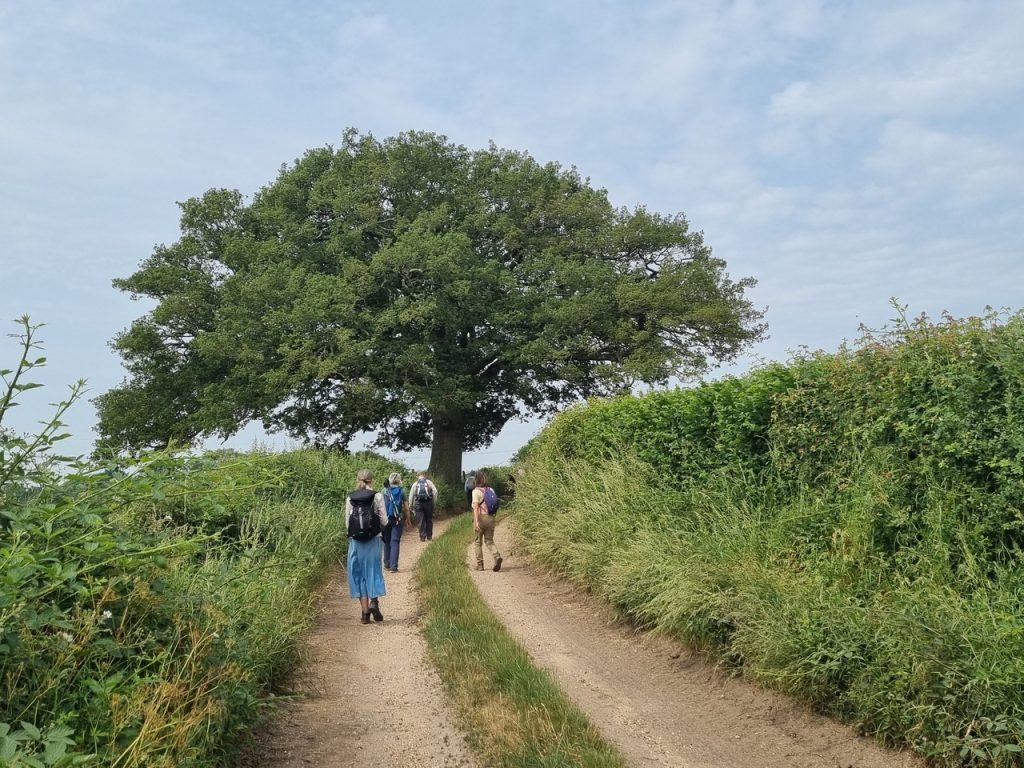
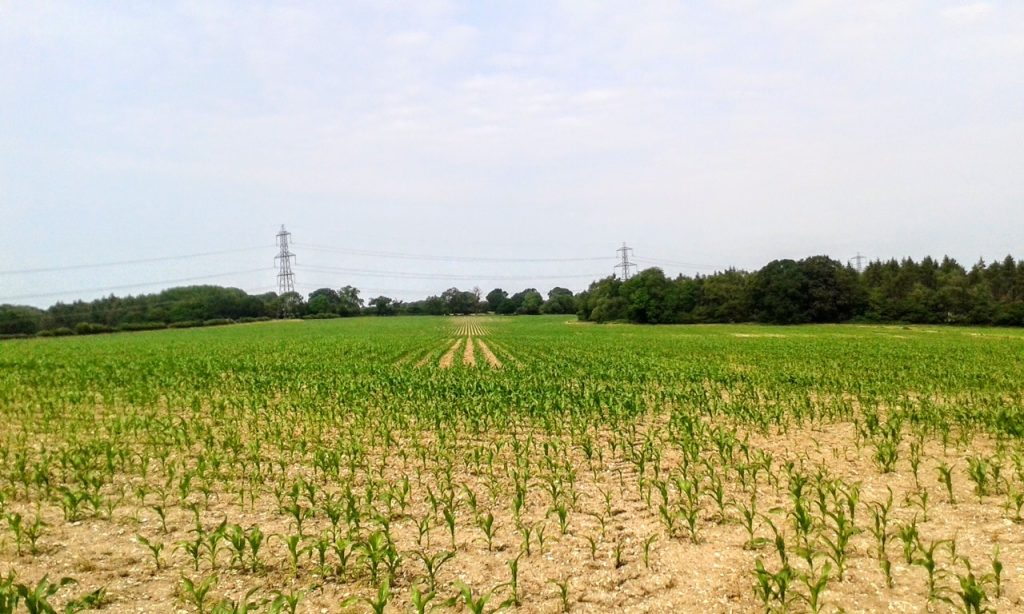
The path that was not there
We then reached a field where the path across its middle was completely obscured by crops, so we walked around the edge.
Turning into a shallow valley, we went downhill to cross a picturesque three-plank bridge over a stream and through a wooden swing gate on its far side.
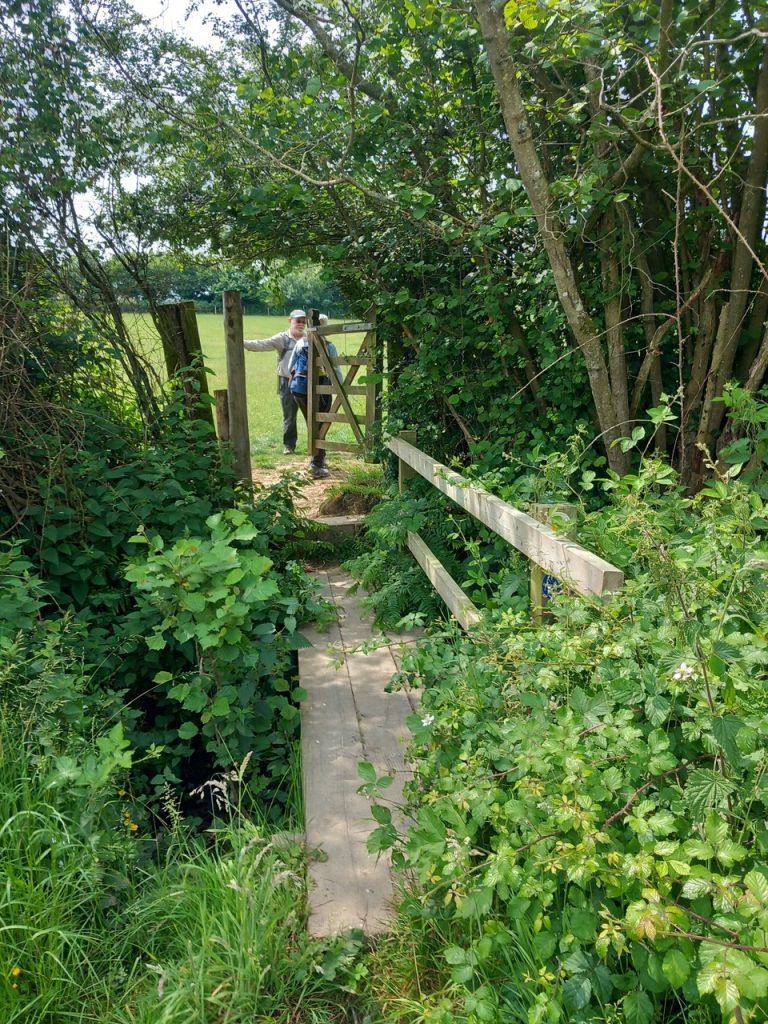
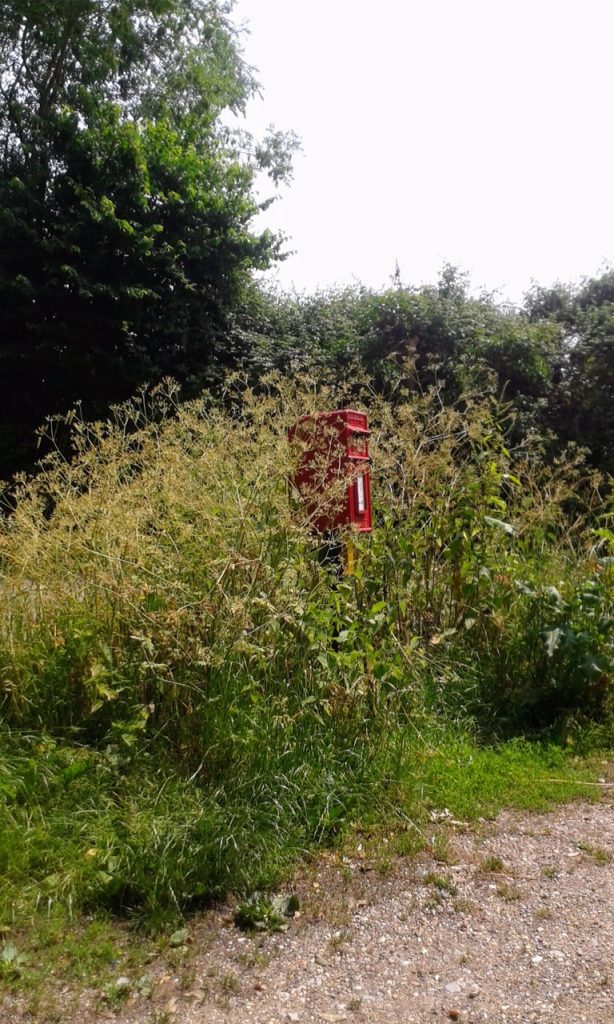
After heading up a grassy field on the other side of the valley, we reached the impressive Roman amphitheatre. We went to its centre and imagined being gladiators with the wild animals released to attack us! Coming out of the amphitheatre, we saw a post box peeking out from tall wild flowers.
A short distance further on, we reached St Mary the Virgin Church, Silchester. The nave & chancel date from 1167. Highlights included well-preserved wall paintings from c.1230, a tomb-chest surmounted by an effigy of a woman from the late 14th Century, the carved oak chancel screen from between 1509 & 1533 which was removed in the late 16th Century‘s Puritan period and found in a barn almost 300 years later, a funerary hatchment from 1774 and an organ of c. 1770 taken from a Tottenham church and given to this church in 1898.
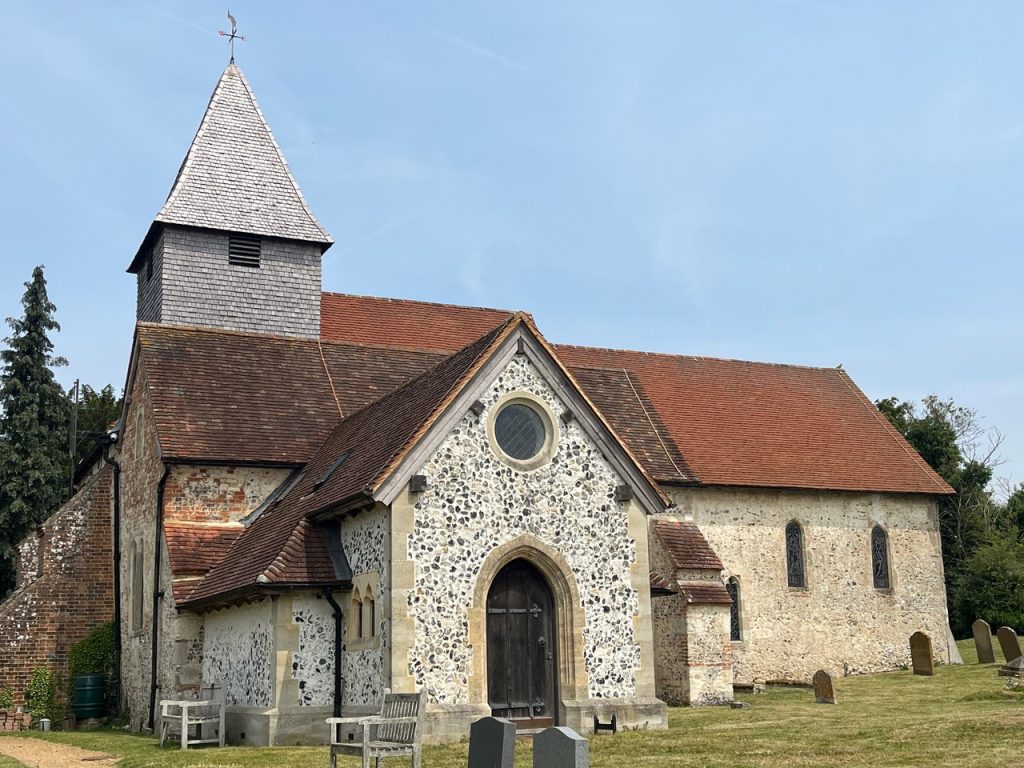
St Mary the Virgin, Silchester

Remains of the Roman walls of Calleva at Silchester
We left the churchyard and, after a zig zag, found ourselves on a path on top of the Roman walls. After about 180 metres, we came down from the walls and walked beside them. The walls are now tall as can be seen in the photo, but they were originally 2or 3 metres higher!
We reached the South Gate, where we read an information panel about the Roman town of Calleva and, almost opposite, an information panel about an earlier Iron Age Settlement, whose earthwork ramparts are visible. After walking through attractive woodland with a wide variety of deciduous trees, we reached the West Gate, where we turned away from Calleva town and headed through woods and across Silchester Common to our lunch stop at the excellent Calleva Arms.
After lunch, we retraced our steps across the Common and into sandy heathland of gorse and spindly silver birch trees. We then entered Aldermaston Soke Woods for a one mile straight walk on a wide forestry path through pine trees. On leaving the woods, there was some walking on roads before the black peat of Padworth Common, which is boggy after wet weather, but for us was dry and springy underfoot.
Leaving the Common, we found the earth driveway going past fields, stables and a large thatched cottage, before entering woodland. There followed a long stretch walking next to a series of huge, partly buried, petrol storage tanks covered in grass, looking like ancient burial mounds.
After another wood, we passed through a fieldgate opposite a sign for Padworth College.
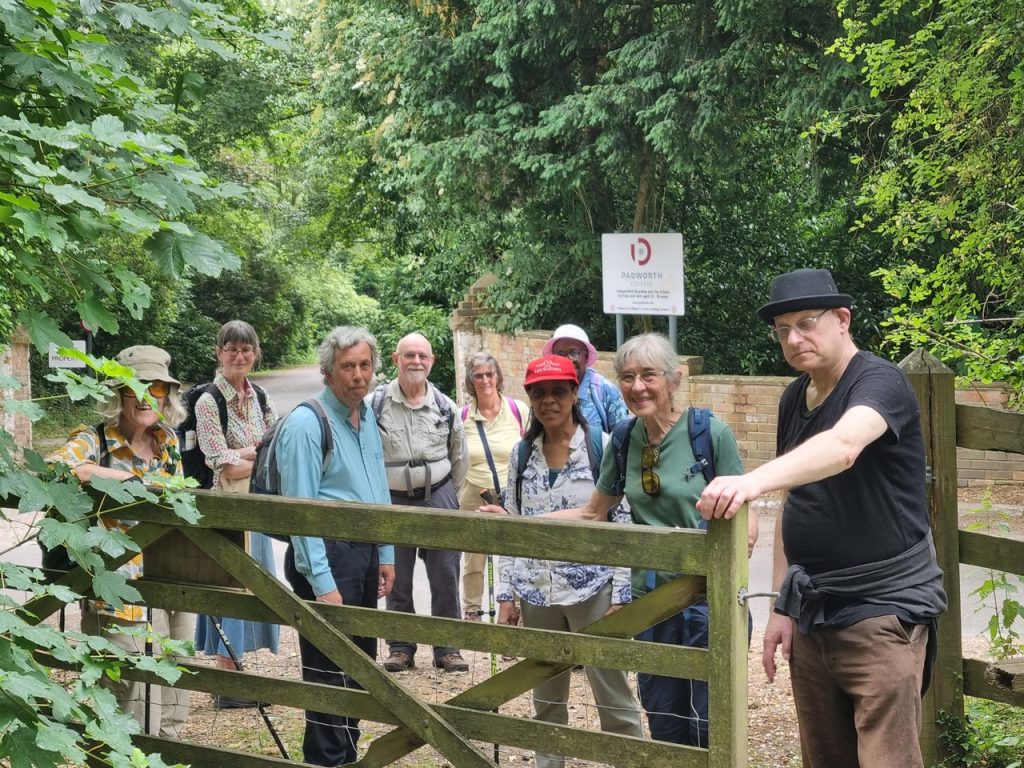

Swan on the Kennet above the weirs
We walked around the outside of Padworth Church and onto a wide path downhill with a lovely view of the valley ahead and fields of horses on both sides (fortunately behind fences). There followed a sequence of fields and footbridges over streams and the River Kennet Weirs, with tranquil scenes and swans upstream and raging torrents downstream.
After a trudge along an earth then tarmac road, we crossed the Kennet & Avon Canal at Aldermaston Wharf, arriving there just too late for the tearoom which closes at 5pm. However, a short walk brought us to the station where we waited, tired but happy, for the 17.25 train.
Terry (and with thanks to Christine M, Christine R, Mary-Jane and Daphne for the photos)


